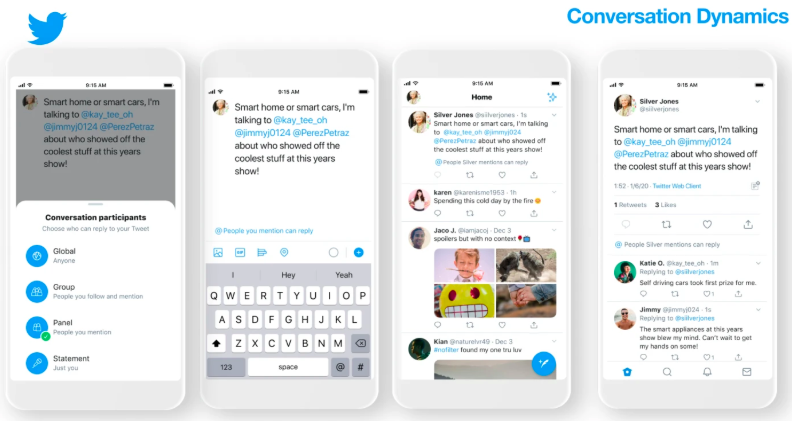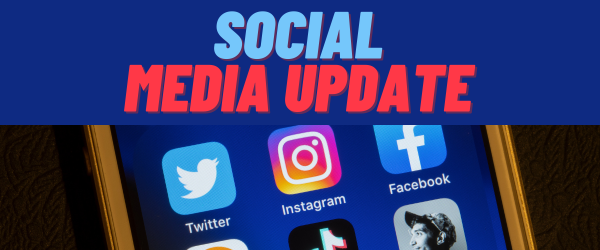As Twitter is right now, if you put something out into the world, anybody can respond to it. Post one image or one statement that some stranger has something to say about, and suddenly you’re inundated with notifications.
Now, maybe this is good, and engagement — annoying or otherwise — is what you want. But, especially for very public-facing people who cannot necessarily keep their accounts private and their followers list neatly managed, when said notification is from someone who felt the need to add their two cents into a conversation with very little though… Well, at this point, we’re used it, but we don’t have to be.
Twitter’s New, Limited “Conversation Dynamics”
The Verge recently reported on Twitter’s director of product management, Suzanne Xie, who spoke at a CES event in Las Vegas to unveil the social media platform’s plans for upcoming changes to their conversation dynamics.
According to Xie, Twitter users will be able to choose their “conversation participants” when they compose a new tweet. There are four different option for participants: Global, which lets anybody reply; Group, which allows people you follow and mention to reply; Panel, which only allows people you specifically mention in the tweet to reply; and Statement, which allows for no replies.
At the moment, this feature is currently undergoing testing. Twitter is running experiments throughout the first quarter of 2020 to further develop it, but they are hoping to launch it fully to the public later in the year. It was initially tested last year, when Twitter launched their “little t” public prototype beta app.
Being able to choose who you’re talking to online is a part of Twitter’s larger goal of limiting bullying and harassment on their site. “Getting ratio’d, getting dunked on, the dynamics that happen that we think aren’t as healthy are definitely part of… our thinking about this,” Xie said.
Bullying and harassment has long been a problem on the site. Some of the more high profile examples of this are the cases of actors Leslie Jones and Millie Bobby Brown. Jones received an onslaught of racist abuse on the platform, particularly when the Ghostbusters reboot came out, so she temporality left the site. Brown left permanently because of a strange meme that started which claimed that she was homophobic, with absolutely no evidence to support that theory.
While we can’t prevent anyone from just posting anything on Twitter, like a hurtful meme, with the new conversation participants option, we can have more control over what we see. We can limit who responds to us so that no one has to ability to reply with untrue and harmful vitriol. We’ve always had the ability to block certain people and we have the ability to turn off notifications in general, but this new feature would take it a step further and really limit harassment in a stronger way.
Twitter also launched a feature recently that would allow a user to hide replies on their tweets. While that’s a good idea because it allows the user to prevent harmful language from continuing to spread and be seen by others who it either may hurt or incite, it doesn’t protect the actual user who posted the initial tweet from seeing those replies in the first place. Essentially, the upcoming feature would be able to protect that initial tweeter.
Twitter replies can be a real headache when they’re filled with some “fans” and people that really want to prove they’re far from being your friend or admirer. Hopefully, with the new change, harassment on the site will be a thing of the past.
(Or, realistically, maybe this feature will just make a dent, which is great too.)

—
JackieMichele is writer and marketer living in the San Francisco Bay Area. Her work has appeared on Yahoo, Food and Wine and the Huffington Post. She’s been an editor, an influencer strategist and ghostwriter, a librarian and a teacher. Follow her Instagram at @jackie_gualtieri and contact her via jackie@ynotcam.com.
Background header image by via Pexels here. Image of “Conversation Dynamics” via Twitter and also shared here (among many other places).








